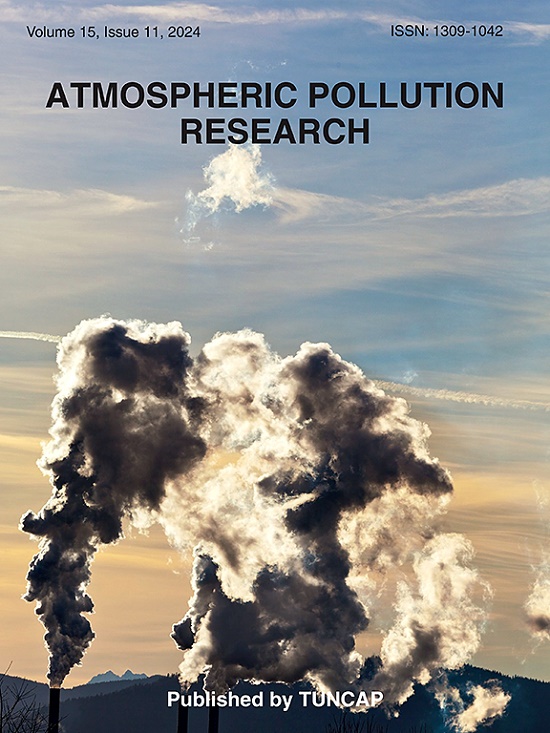Experimental and numerical characterization of the concentration distribution of particulate pollutants inside a full-scale car cabin
IF 3.9
3区 环境科学与生态学
Q2 ENVIRONMENTAL SCIENCES
引用次数: 0
Abstract
We report an investigation of particle dynamics through measurements of particle concentrations inside a full-scale car cabin and comparing the results to numerical predictions obtained using the ”Diffusion-Inertia Model” (DIM) for particle transport, coupled with the RANS approach for single-phase flow. Measurements were conducted by placing the vehicle in a closed chamber where a homogenized atmosphere was generated and controlled, enabling the study of fine and ultrafine particle infiltration by measuring the particle mass concentration distribution inside the vehicle’s cabin. A comparison between numerical and experimental results for particle concentration profiles of PM1 and PM10 showed that the numerical model reasonably reproduces the experimental results, particularly for low-inertia particles. Both numerical and experimental analyses revealed a tendency toward particle concentration homogeneity within the compartment. Additionally, the influence of ventilation velocity on the dynamics of and particles was investigated numerically. The results indicate that increasing airflow velocity accelerates the homogenization of particle concentrations, while inertia effects become more pronounced, leading to lower concentration levels due to particle deposition on cabin surfaces. The effect of thermal buoyancy on particle transport was also examined. While the overall dispersion patterns remained largely unchanged, localized variations were observed, particularly in the passenger breathing zone, where thermal effects reduced particle concentration.
全尺寸汽车舱内颗粒污染物浓度分布的实验与数值表征
我们报告了一项粒子动力学研究,通过测量全尺寸汽车舱内的粒子浓度,并将结果与使用粒子输运的“扩散惯性模型”(DIM)和单相流的RANS方法获得的数值预测结果进行比较。测量方法是将车辆置于封闭的室内,在密闭的室内产生并控制均匀的大气,通过测量车辆舱内的颗粒质量浓度分布,研究细颗粒和超细颗粒的入渗情况。PM1和PM10颗粒浓度分布的数值与实验结果对比表明,数值模型较好地再现了实验结果,特别是对于低惯性颗粒。数值和实验分析都揭示了颗粒浓度均匀性的趋势。此外,还研究了通风速度对1μm和10μm颗粒动力学特性的影响。结果表明,风速的增加加速了颗粒浓度的均匀化,同时惯性效应变得更加明显,颗粒沉积在舱室表面导致浓度水平降低。研究了热浮力对粒子输运的影响。虽然总体扩散模式基本保持不变,但局部变化仍被观察到,特别是在乘客呼吸区,热效应降低了颗粒浓度。
本文章由计算机程序翻译,如有差异,请以英文原文为准。
求助全文
约1分钟内获得全文
求助全文
来源期刊

Atmospheric Pollution Research
ENVIRONMENTAL SCIENCES-
CiteScore
8.30
自引率
6.70%
发文量
256
审稿时长
36 days
期刊介绍:
Atmospheric Pollution Research (APR) is an international journal designed for the publication of articles on air pollution. Papers should present novel experimental results, theory and modeling of air pollution on local, regional, or global scales. Areas covered are research on inorganic, organic, and persistent organic air pollutants, air quality monitoring, air quality management, atmospheric dispersion and transport, air-surface (soil, water, and vegetation) exchange of pollutants, dry and wet deposition, indoor air quality, exposure assessment, health effects, satellite measurements, natural emissions, atmospheric chemistry, greenhouse gases, and effects on climate change.
 求助内容:
求助内容: 应助结果提醒方式:
应助结果提醒方式:


